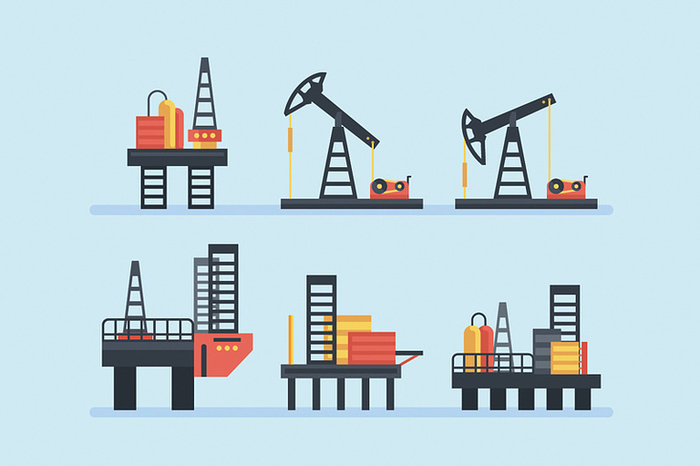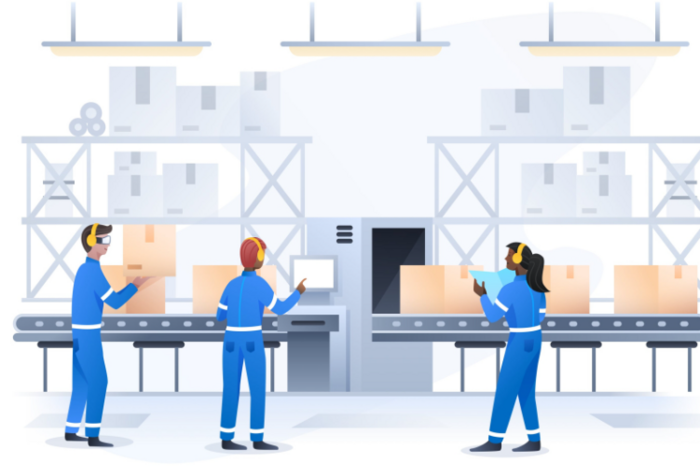Img Source - Abheeth for Column Five
Ensuring the safety of workers in today's industrial environments, mainly manufacturing facilities, is paramount to organizations. Given these environments' inherent risks and hazards, organizations must implement practical tools to protect their workers and optimize operations. This article explores a comprehensive approach to improving workplace safety in manufacturing facilities, covering traditional standards and protocols as well as innovative systems such as Navigine's indoor tracking platform, all aimed at ensuring the safety of manufacturing workers.
Why Safety is Paramount in Manufacturing Facilities
Industrial safety is dedicated to protecting the health and lives of workers by implementing strategies and practices aimed at preventing emergencies. Implementing these measures involves managing events and operations at the facility to assess and minimize risks and ensure better personnel visibility during accidents and emergencies.
Proper safety provision is crucial for manufacturing companies. Addressing risks in production ensures stable operations, enabling staff to continue their activities without disruption.
By prioritizing safety, several benefits can be obtained:
- Increased labor productivity
- Prevention of injuries and occupational illnesses among workers
- Minimization of equipment damage in case of accidents
Against the backdrop of constantly changing production processes and conditions, ensuring safe workplaces becomes increasingly challenging. New rules and laws are continually being introduced, along with innovative safety ideas tailored to the interests of managers, personnel, and regulatory bodies. Administrations must adapt to these changes and train employees to ensure the continuous operation of workshops, incorporating new safety ideas for the manufacturing plant.
In the Americas and Europe, standards aim to ensure production safety. For example, in the United States, the Occupational Safety and Health Administration (OSHA) develops comprehensive requirements to maintain safety in manufacturing facilities. The organization's recommendations cover all aspects of enterprise activities, including the use of warning signs, workplace organization, and equipment protection.
As OSHA statistics show, manufacturing has the highest number of workplace injuries. In 2015 alone, there were 10,388 serious injuries, 7,636 hospitalizations, and 2,644 amputations related to industrial activities. This underscores the need for safety best practices in manufacturing in the industrial sector to minimize injuries and protect personnel.
Recommendations for Ensuring Safety in Manufacturing Workplaces
Adhering to safety at the workplace is a simple way to prevent common accidents and injuries in production, such as personnel collisions with vehicles, prolonged exposure to hazardous areas, and working with faulty equipment. Below are some essential safety tips for the manufacturing workplace to minimize injuries and preserve people's health.
Use Personal Protective Equipment (PPE)
Utilizing PPE is one of the most effective ways to ensure workplace safety. Protective masks, respirators, helmets, and other PPE can significantly reduce the risk of injuries, especially when working with chemicals and hazardous materials.
Control Unsafe Conditions
When potentially hazardous work conditions are identified, employees should promptly report them to supervisors. If any equipment is damaged or malfunctioning, it's essential to inform the relevant personnel.
Provide Safety Training
Workers should receive continuous safety training. This training enables individuals to acquire new skills and learn how to protect themselves and their colleagues from injuries. To ensure ongoing engagement with safety knowledge among employees, a variety of methods can be utilized, including traditional courses, videos, quizzes, and other interactive approaches.
Prevent Slips, Trips, and Falls
Actions such as tripping, falling, and slipping are the second most common cause of injuries in production. These can be prevented by:
- Keeping the workplace clean
- Promptly informing management of potential hazards
- Using protective devices such as guards and pallets
- Monitoring the floor condition (it should be free of holes, nails, and loose boards).
Conduct Regular Safety Inspections and Equipment Maintenance
Production safety checks help identify problems that management or staff may not notice under normal conditions. They can reveal issues like sagging wires, inadequate lighting, or blocked exits. Regular maintenance is essential to prevent equipment damage. This helps address equipment malfunctions at early stages.
By following these recommendations and implementing comprehensive safety measures, manufacturing companies can create safer work environments, reducing the risk of accidents and protecting their most valuable asset—their employees.
Innovative Safety: The Impact of Indoor Tracking Solutions
As practice shows, innovative indoor positioning and tracking tools are proving to be more effective solutions for ensuring production safety. Implementing these systems involves using software and specialized equipment to determine the location of personnel and machinery and track their movements in real-time. Let's explore the opportunities that new technologies open up for manufacturing enterprises.
Real-Time Monitoring of Employee Locations
All employees of the company are displayed on the building map. Management can track people's movements and gather analytics to make effective managerial decisions. The platform enhances security measures and improves work discipline, positively impacting labor productivity.

Warnings about Proximity to Vehicles and Hazardous Equipment
Systems can be configured to notify employees about the transport or specialized machinery are approaching. This helps prevent collisions with personnel, eliminates vehicle collisions, and makes work at the facility safer.
Industrial Tracking UWB Kit
Try all location-powered capabilities with the Navigine Industrial Tracking UWB Kit
PurchaseEmergency Evacuation Route Guidance
In case of an accident, the platform helps employees to exit the building promptly. A short route to the exit can be mapped through the program, ensuring an efficient personnel evacuation.
Security Notifications Based on Geofencing
When using indoor tracking systems, the facility's territory can be divided into zones, and specific access rights can be granted to employees for each area. If any employee enters a zone prohibited for them, information about this is immediately sent to the administration.

Ability to Use an SOS Button in Emergencies
One of the features of the tracking system is the deployment of an alarm button, which allows the administration to be alerted in an emergency. The SOS system allows security personnel nearest the accident zone to be quickly located and directed to the signal source.
Tracking the Location of Protective Equipment/Systems
Using the indoor tracking system, enterprise employees can swiftly locate protective systems or devices when needed. The exact location of first aid kits, personal protective equipment, and other equipment is displayed on the map. A route to the equipment can be mapped out for quick access if necessary.

Employee Behavior Analysis
A significant advantage of the indoor tracking system is the collection of detailed analytics on personnel behavior. The system provides a complete history of people's movements, tracks traffic, and creates heat maps. This allows for workspace optimization and helps management identify patterns related to safety compliance.
Incident Reporting
Gathering reports on emergencies opens up broad opportunities for incident analysis. With the provided information, management can accurately determine the causes of incidents and take necessary measures to prevent accidents in the future.
Thus, modern safety projects for manufacturing play a crucial role in preserving the lives and health of personnel. They can increase employee and management awareness, improve communication, and optimize daily work processes. When combined with proven practices, innovative solutions minimize personnel risks and help prevent injuries and asset damage. Ultimately, they contribute to the implementation of best safety practices in manufacturing.
You can test the demo version by following the provided link - https://navigine.com/demo-rtls/. Users can access an efficient web service based on RTLS technologies, allowing real-time monitoring of employee movements and production equipment. For additional platform assistance, fill out the feedback form or schedule a free online call with our manager.




